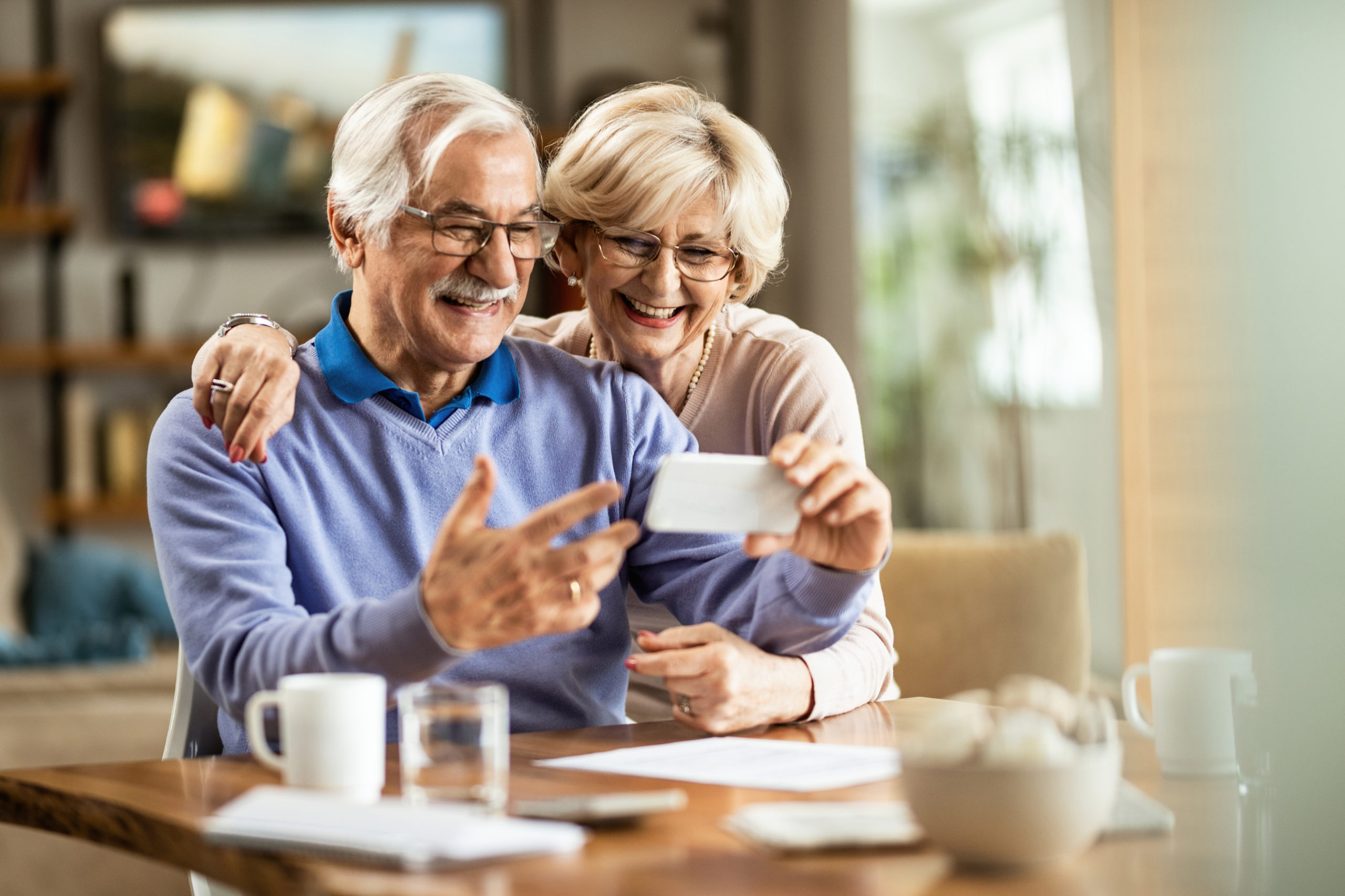Today’s seniors face a dilemma because they don’t know How can technology help seniors?. They didn’t grow up during the age of the internet and computers, but this age category now depends upon this technology. In turn, elderly adults are learning more and utilizing technologies for the very first time. Technology, in general, is helping give seniors a better quality of life through a sense of community and increased connectivity.
The Internet and seniors
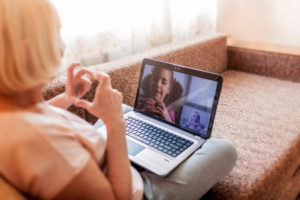
Seniors are quickly accepting the internet. As a matter of fact, internet adoption has tripled within the last 20 years. According to the Pew Research Center, only 14% of elderly adults had internet in their houses in 2000. In 2017, that number increased to 67% for adults over the age of 65. Also, 51% have high-speed internet (broadband).
Around the age spectrum from elderly adults age 65 to 80+, the younger part is more likely to use the internet. About 82% of mature adults 65 to 69 use the internet, while just 44% of the ones over the age of 80 have internet inside their homes. Of elderly individuals who use the internet, 71% go online daily.
What are elderly adults doing online? Roughly 46% use social networking websites, like Facebook or Pinterest, according to 2014’s Pew Research. Another reason why senior citizens use the internet includes finding information.
Seniors Use the Internet to Locate Senior Care
Whether you’re a caregiver or elderly adult browsing care services, the internet offers a gateway to lots of information. As a matter of fact, it may be overwhelming if you are not sure where you should start or how you should begin. If you’re browsing information on how to pick senior care, like hospice care or independent living, it’s possible to locate this online. At Optimum Personal Care, we provide everything you should know about locating senior care, which includes:
- Specialized care for elderly adults who have health problems, like dementia through memory care
- Basic services and amenities you can expect in senior housing
- Where to find the right memory care facility in Sugar Land for your loved one
- How to pay or save for senior living
- How much assisted living costs
- Details about personal care homes
All those details are compiled there for your benefit. Because of the internet, it’s possible to read and search resources on senior living at your convenience. Here are also some additional resources for locating senior care:
- Volunteers of America operates and owns senior living centers
- US Government housing for seniors and additional resources—scroll down their page for details
- Medicare help for elderly adults
It’s also possible to visit your state’s government site and check what type of state programs are out there for senior citizens.
Use the Internet to Assist in Paying for Elderly Care
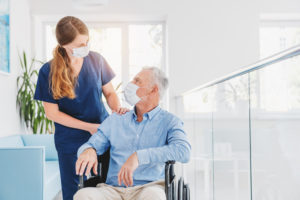
After you’ve surfed online to locate senior care and senior housing resources, you’ll have to figure out a method of paying for them. Some senior citizens have retirement investments and funds for paying for elderly care, but not everybody is that fortunate. If you require assistance in paying for care, utilize the Web to locate the details needed. It’ll save you the struggle of finding transportation to and from various agencies for help. For senior citizens who don’t have the ability to afford transportation, the Web opens the doors for resources.
Here are websites for elderly adults browsing methods of paying for elderly care:
- Discover if your Medicare coverage pays for your kind of elderly care
- Learn information on long-term care coverage that is available by the United States Department of Health & Human Services
- National Council on Aging offers a Benefits Check Up tool, which is able to browse benefits programs in your locality or according to your unique specifications.
Use the Internet to Locate Help with Elder Law
One area that’s most problematic in the elderly community is elder abuse. This age category is most vulnerable to financial scams and elder abuse because they’re likely to have a massive amount of funds saved for retirement. Seniors, at the same time, are more than likely to experience age-associated memory loss or some type of health problem which might leave them vulnerable. Plus, elderly adults oftentimes must depend on others, like caregivers, financial planners, or nurses, to help care for daily activities. That opens the door for criminals wanting to find methods of scamming, stealing from, or otherwise abusing senior citizens.
When a senior gets stolen from, scammed, or abused in any way, that’s a crime. In the past, unfortunately, elderly individuals didn’t have access to many resources to assist them in combatting this problem. That’s where the Web provides a lot of promise for mature adults. As an elderly individual, it’s possible to browse everything from reporting scams to locating a lawyer because the internet.
- If you believe you’re being financially scammed it’s possible to browse online for accurate data concerning common senior scams through the National Council on Aging.
- If you’ve been scammed, report it to the FBI.
- Locate a lawyer who specializes in elder law with the National Elder Law Foundation.
- Learn about elder law topics in the United States and internationally and locate organizations to help at org.
- Find contact details for state government agencies, elder abuse hotlines, and elder laws within your state through the use of the National Center on Elder Abuse
Technology Products for Seniors
With the internet, we’ve also witnessed an explosion of technologies geared at connectivity, automation, and electronics. The majority of those technologies, like smartphones, tablets, and security camera systems, depend upon internet connectivity to completely function. Senior citizens with accessibility and comprehension of technology may reap the rewards. Let us discuss the various kinds of tech products for seniors and how they’re being used by this demographic.
E-Readers and Tablets
Tablets, like iPads, opened up the doors of computer technology for every age. As an elderly individual who didn’t learn how to use computers at school, the invention of keyboard-free laptops that have easy-to-use icons as applications is a life changer. A tablet, at the same time, may be utilized to do anything that a computer can, from printing out photographs using a wireless printer to creating a document.
Seniors have the ability to play games that stimulate the mind. They may connect on social media and in chat rooms using tablets. A tablet also bridges the generations. Elderly adults may utilize the same tablets as their grandchildren and children, which assists these age groups in bonding with one another.
Utilizing technology, senior citizens may have a whole library at their fingertips. E-readers, which include Nook and Kindle products permit elderly individuals the capability of downloading content to inexpensively read. The majority of public libraries currently offer free e-book rentals, which include downloads of magazines on e-readers. It enables mature adults on fixed incomes to learn and remain connected to the world without having to spend any money, beyond the original expense of the e-reader. As a matter of fact, tablets contain e-reader apps that are available so that elderly adults may buy a tablet and then use it for reading, online social activity, and computing.
Smartphones and Cell Phones
About 4 out of 10 seniors own a smartphone, according to the Pew Research Center. Roughly 80% of senior citizens over age 65 have a phone of any kind. The biggest group of senior citizens to own a cellphone are the ones between 65 to 69, whereby 95% own a mobile phone. The smallest category is seniors over the age of 80 with 58% owning a cellphone. Owning a phone as an elderly adult provides benefits and challenges.
Mobile devices provide elderly adults with the capability of staying connected with caregivers and loved ones. They may text or talk whenever they’re feeling lonely or need help. Most importantly, in case there’s an emergency, they’ll have a method of making a call no matter where they’re at, so long as they have accessibility to a phone.
With changes and updates to cell phone technology, it may be hard for mature adults to keep up. Seniors frequently need assistance from cell phone technicians or caregivers to comprehend new device features. Seniors also might have problems using specific kinds of cell phones that don’t provide accessibility features. These include magnification, increased font sizes, hearing aid compatibility, and speech output. Seniors might have problems finding phones which offer these types of features or knowing how to access those on their devices.
Apps for Seniors
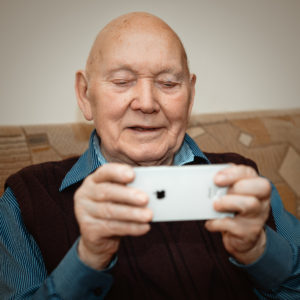
In conjunction with the increased use of smartphones is the rising demand for apps. Those cell phone programs provide a variety of benefits for elderly adults who might need assistance with remembering, tracking medicine, or finding a parked vehicle. Here, we list some suggested apps for seniors:
- Magnifying Glass w/ Light that improves sight for people who have vision loss or age-associated macular degeneration
- VocalEyes AI which speaks out loud and informs you of everything on a phone screen
- Mimi Hearing Test that tests your hearing in a matter of seconds
- Doctor on Demand connects elderly adults with board-certified doctors and psychologists who provide medical advice through live video calls
- Medisafe’s Pill Reminder reminds seniors to take their medicine while alerting caregivers or family if medications aren’t consumed on time
All of the above apps are available on the majority of devices and are free to download.
Technology and Transportation
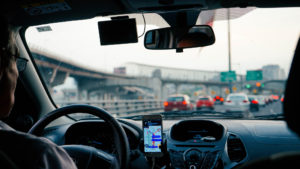
Elderly adults who do not have the ability to drive may benefit from using apps and technology for transportation. Two popular and common services are Lyft and Uber. How do these transportation services work? You download an app on your phone. You type in your destination and the app notifies you of their nearby drivers. All payments are made through the app, by utilizing your debit or credit card details. The transportation service is perfect for elderly adults who wish to stay independent and on the run but might lack the capability of driving.
Food Delivery Services

Technology evolved food delivery services to more than mere pizza delivery. There is a multitude of food subscription boxes in the market, which include:
- Purple Carrot
- Green Chef
- Plated
- Blue Apron
- Hello Fresh
Those food subscriptions offer consumers recipe cards and boxes of ingredients for an established number of meals every week. A few subscriptions allow you to pick your recipes while other services surprise you. Some subscription services concentrate on healthy eating, such as Green Chef, while other ones send recipes out that are easy and quick, such as Plated. If you like to cook for yourself yet lack the mobility to go to the grocery store, those services are popular solutions. Remember, you’ll pay top dollar, as one meal for a single person averages $12/ plate. Read article for How Can Hospice Care Support a Family Member with a Terminal Illness?
Wearable Technology for Elderly Adults
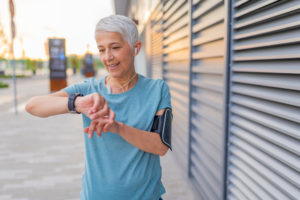
The wearable tech involves fitness tracking watches yet provides much more for senior adults. The most popular wearable technology for elderly adults is a medical alert system. Such systems have bracelets or necklaces connected to cell phone or home phone lines. There are also day-to-day activity wearables for mature adults which are more like the Fit Bit. Such devices monitor a user’s vitals, like their sleep activity or blood oxygen level.
ATD (Assistive Technology Devices)
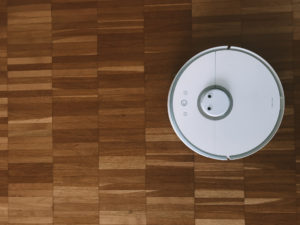
ATDs (assistive technology devices) help senior citizens be and feel safer inside their homes, whether they reside in their own homes or an assisted living center. The senior living aids assist people in performing daily tasks, like using the toilet or walking through their home, with a decrease in strain. Below we list eleven of the most popular kinds of ATDs for elderly adults:
- Computer screen magnifying devices
- Remote controls that have super-sized numbers
- Chair and Bed Fall guard that protects in the event someone falls from their chair or bed
- Voice-controlled clock, Reminder Rosie
- Vacuum cleaner, Roomba
- In-house video monitoring system
- Doorbell video camera
- Google Home and Amazon Echo devices
- Hearing aids
- Power scooters and wheelchairs
- Stairlifts
One other ATD that’s highly necessary for senior citizens who have vision loss is lighting. It may be as simplistic as adding reading lamps to dining tables and desks and standing lamps in dark spaces and hallways of the house. It proves that sometimes the simplest technologies may stay as effective in helping senior citizens live a safe and healthy life.


